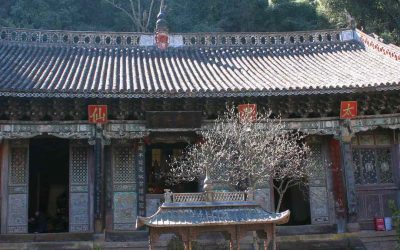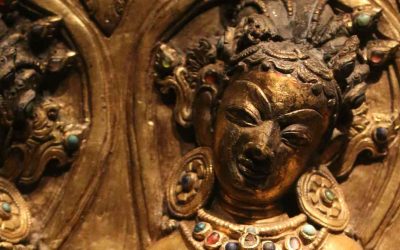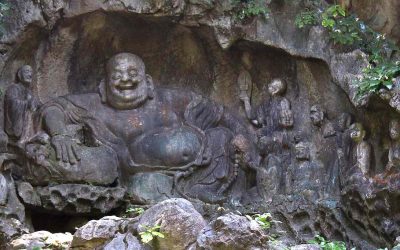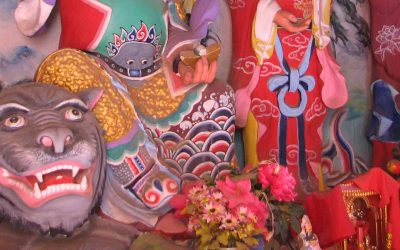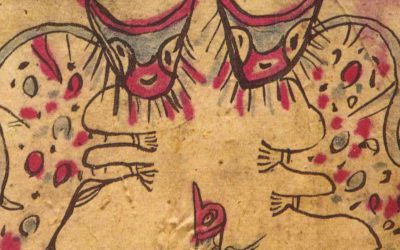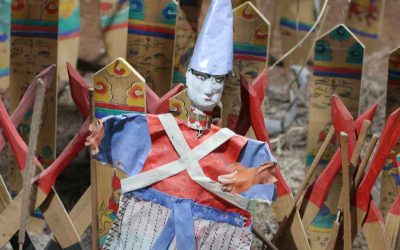The Dong are one of the minorities of China with a large population. According to the census of the year 2000 their population was 3,000,000 people.
They live mainly in Guizhou Province (approximately 1,800,000 people), along a fringe of flat lands that cross the province from north to south. There is also a big Dong population in the southern part of neighboring Hunan Province (about 900,000), and more than 200,000 persons in Guangxi Zhuang Autonomous Region, and a few thousand in Hubei Province (Enshi Prefecture).
The Dong, as do most of the peoples related to them, live near the rivers or in hills generally not of great height. They mainly cultivate rice. They raise domestic animals, especially hens and pigs. The exploitation of the forests, which holds a special spiritual relationship with the Dong, is an activity of economic importance.
They refer to themselves as «Kam.»
It is generally considered that there are two quite different types of Dong, the Dong of the North and the Dong of the South.
There are important linguistic and cultural differences between them. In general those of the north have received more influences from mainstream Chinese culture, while those of the south better conserve the Dong traditions. The typical monuments of the Dong, such as Drum Towers, Bridges of Rain and Wind, and the Temples of the Goddess Mother Sama, are all characteristic of the Dong of the South.
Their language belongs to the Sino-Tibetan family, Dong Dai branch, Zhuang Dong sub-branch. It has two main dialects, understandably called the northern and southern dialects, whose speakers cannot understand each other easily. Each one of these dialects has in turn three clearly differentiated local sub-dialects.
After 1958 an alphabet was invented for their language, but it has not been widely used. Before 1958, they used Chinese characters adapted to their own language.
More posts on China ethnic groups
Manual de Arquitectura taoísta
Manual de Arquitectura taoísta Hay algunos libros ilustrados qué producen en el lector un sentimiento contradictorio, pues a las imágenes que explican lo que el texto trata, hay veces que acompaña una exposición de las ideas demasiado superficial. Por lo tanto el...
Cómo la presencia de diosas allana el camino al poder femenino
Cómo la presencia de diosas allana el camino al poder femenino Una de las tesis de mi libro Matriarcado en China: madres, diosas, reinas y chamanes (Madrid, 2011) fue afirmar que la presencia de diosas con papel prominente en una cultura podía señalar la existencia...
Las aventuras del monje loco Ji Gong
Las aventuras del monje loco Ji Gong Los días pasados he estado leyenda una novela sobre el monje pícaro más famoso de China. Sobre el Monje Ji Gong, más conocido por su afición al vino y a la carne que por sus méritos religiosos. Su bondad y su deseo continuo de...
12 frases hechas relacionadas con el tigre
12 frases hechas relacionadas con el tigre Ante la llegada del Año del Tigre 2022 aquí van 12 frases hechas (chengyu) relacionadas con el tigre, para que los que están familiarizándose con el idioma puedan ir practicando una cada mes. Como un lobo, como un tigre 如狼似虎...
El misterio de los temidos guerreros tigres en China
El misterio de los temidos guerreros tigres en China Carácter del tigre y su relación con la guerra y las armas. En la China antigua el tigre era el Dios de la Guerra. No hay duda de que su fuerza, su ferocidad, su majestuosidad, su capacidad de atacar a cualquier...
El héroe tigre de los Naxi
El héroe tigre de los Naxi[1] Hace mucho tiempo vivía en la zona de Baoshan un hombre llamado Gaoqu Gaobo, que tenía un cuerpo fuerte, una viva inteligencia y ciertos poderes mágicos. Siempre estaba dispuesto a ayudar a la gente. Un día salió de viaje con un grupo de...


